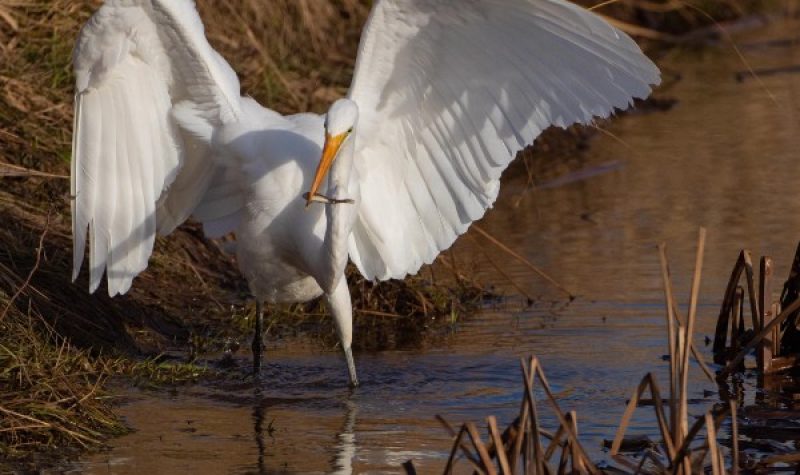Bird enthusiasts are bewildered by two rare feathered specimens that have taken up residence in Sackville.
A Great White Egret has been fishing among the cattails of the water retention pond for weeks. The majestic heron-like bird is found across South America year-round, and it ranges widely across Central and North America, reaching as far north as Quebec and New Brunswick.
Tantramar would normally be far beyond its northern limit at this time of year.
The other unusual avian is a Green-tailed Towhee, a kind of sparrow normally found in Mexico and the southwest United States and known by its rust-coloured crown and yellow-green wings and tail.
It has been spotted for weeks near the Tantramar Wetlands Centre, behind the high school. Some have suggested it blew in with Hurricane Fiona.
Both of the so-called “vagrant birds” are far beyond their normal range, but sightings have been reported as recently as Thursday on the website eBird Canada.
For more on this story, CHMA reached out to some local bird experts.
Beth MacDonald is a lab instructor in the biology department of Mount Allison University, where she also teaches ornithology, the study of birds.
Birds often land in the wrong part of the world after getting blown off course by a storm, and young birds are susceptible to flying off in the wrong direction, she said.
The climate crisis is causing myriad changes to the natural world, including the northward expansion of ranges, but that phenomenon can’t necessarily explain a lone Egret.
“For a single bird, it's hard to know exactly what brought that individual here,” MacDonald said.
The Egret appears to have found an excellent source of fish, and it may have sensed the winter would be mild, said Moncton-based ornithologist and broadcaster Alain Clavette.
He stressed that photographers should avoid going too close, since the Egret may burn precious energy by taking flight. “It's putting pressure on this bird.”
He’s less worried about the survival of the Towhee, a “big hearty bird,” especially now that people have provided it with a source of seeds to eat.
“I think it's getting used to seeing people around and doesn't see people as threats,” he said, noting that many people are snapping photos of the rare creature.
“Lots of pictures, a lot of good pictures,” he said. “I'm trying to restrain myself to go back. I got some really good shots anyway.”
Listen to the report that aired on Thursday, Jan. 12, on CHMA:


